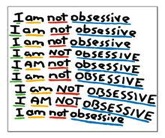As the baby boomer generation ages, many more begin to experience the physical and mental challenges that inevitably accompany the aging process. The prevalence of mental illness has been found to increase with age. Research indicates that 20 percent of the American population over 55-years-old is afflicted by at least one mental disorder (APA, 2012). Furthermore, nearly 70 percent of those in long-term care facilities display psychological and behavioral challenges (APA, 2012). However, less than three percent of individuals in late adulthood have reported that they seek psychological treatment. Thus, there are likely many individuals within this population who have never sought treatment who could truly benefit from it.
A high co-occurrence rate has been identified between physical health problems and mental health problems. Unfortunately, many physicians fail to notice their patients’ anxiety and depression (Alexopoulos, 2005). As a result, an appropriate diagnosis may be overlooked and associated symptoms may be left untreated.
Suicide Risk
Older adults have the highest risk of suicide when compared to all other age groups (Connell, Chin, Cunningham, & Lawlor, 2004). In fact, they are two times more likely to commit suicide in comparison to the general population. Both social factors, such as isolation, and the prevalence of psychological disorders, highly impact the rate of suicide within this population (Alexopoulos, 2005). Thus, if the symptoms of mental disorders are unnoticed and left untreated, they may lead to fatal consequences. Research has shown that approximately 75 percent of older adults who have committed suicide have met with their doctor within the last month (APA, 2012). Thus, it is necessary for everyone, including physicians, to be aware of this high risk age group, so that proper precautions can be taken to prevent suicide and improve overall mental health care.
Potential Signs of Depression in Older Adults
Here is a list of possible signs of depression in older adults according to the National Alliance on Mental Illness (NAMI, 2013, para. 3):
- Memory problems
- Confusion
- Social withdrawal
- Loss of appetite
- Weight loss
- Vague complaints of pain
- Inability to sleep
- Irritability
- Delusions (fixed false beliefs)
- Hallucinations
- Persistent and vague complaints
- Help-seeking
- Moving in a more slow manner
- Demanding behavior
Treatment
While the prevalence of mental health problems is higher in older adults, the good news is that there are evidence-based treatments that can help. Cognitive behavioral therapy (CBT) has been demonstrated to be effective in relieving the symptoms associated with stress, anxiety, and depressive symptoms. In fact, structured therapies, such as CBT, have been found to be as “effective as antidepressants for moderate depression and may be more effective in reducing recurrence” (Ell, 2006, para. 12).
If you know anyone who suffers from symptoms of depression, anxiety, or stress, please encourage them to seek professional support. If you are in the San Diego area and would like to speak to a professional at CSAM who specializes in CBT for older adult stress, mood, and anxiety problems, please contact us.
References
Alexopoulos, G. S. (2005, June). Depression in the elderly. Lancet, 365(9475), 1961-1970. Retrieved from http://web.ebscohost.com
American Psychological Association. (2012). Growing mental and behavioral health concerns facing older Americans. Retrieved from http://www.apa.org/about/gr/issues/aging/growing-concerns.aspx
Connell, H. O., Chin, A. V., Cunningham, C., & Lawlor, B. A. (2004, October 16). Recent developments: Suicide in older people. BMJ, 329(7471), 895-899. Retrieved from http://www.ncbi.nlm.nih.gov/pmc/articles/PMC523116/
Ell, K. (2006, July). Depression care for the elderly: Reducing barriers to evidence based practice. Home Health Care Serve Q, 25(1-2), 115-148.
NAMI. (2013). National Alliance on Mental Illness. Retrieved from http://www.nami.org/Template.cfm?Section=By_Illness&template=/ContentManagement/ContentDisplay.cfm&ContentID=7515






